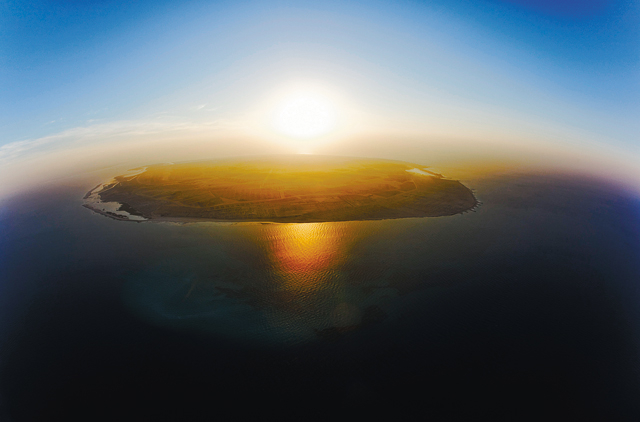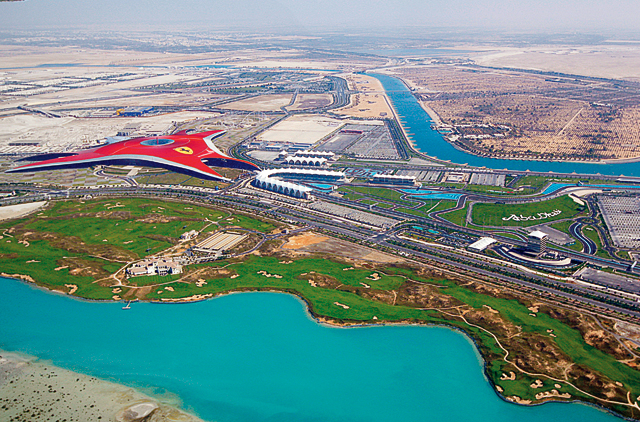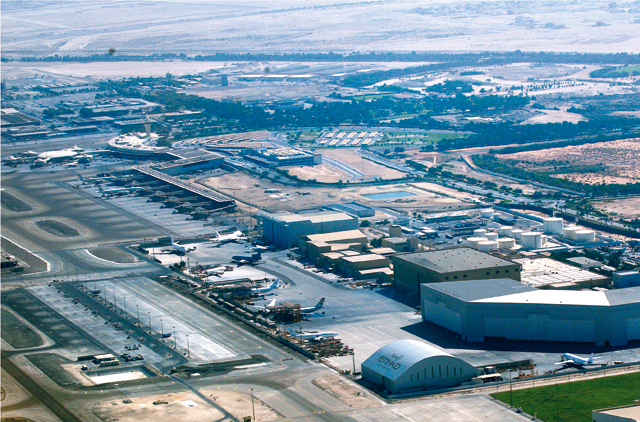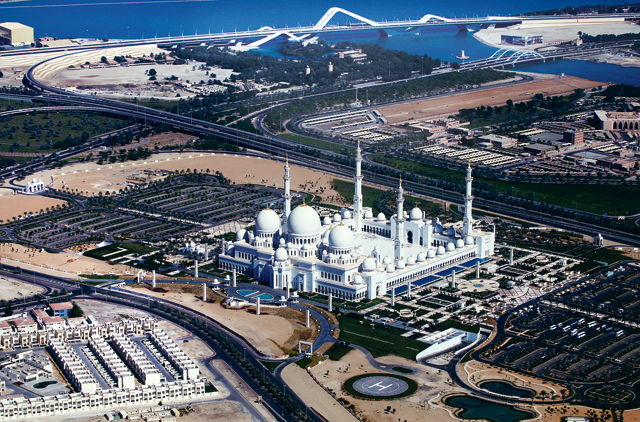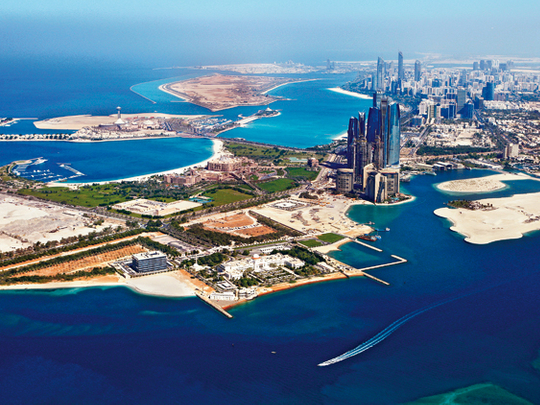
1 One of the advantages of seeing landmarks from above is that you get to admire their sheer scale, as experienced in these pictures taken aboard a Seawings flight in November last year. It becomes apparent from this vantage point that the Emirates Palace, one of the world’s most opulent hotels, is aptly named. The structure itself is as regal as they get, as is the surrounding expanse of gardens. It’s as if Versailles itself was placed on the edge of the Arabian Peninsula. In stark contrast nearby are the Etihad Towers, the signature structures of Abu Dhabi. The five contemporary towers that compose the set are a sleek addition to the Abu Dhabi skyline and seem set for iconic status.
2 There is something eerily magical about the sun setting behind Sir Bani Yas Island in this photograph taken a couple of years ago. This secluded drop of land in the ocean seems the last bit of untouched foliage in the UAE. Wildlife roaming free is an alien concept after living in the Emirates for a while, hence the idea of experiencing it on this solitary island is all the more enticing. This is probably one sight that is better seen up close. The island is home to gazelles, deer, giraffes, dolphins and sea turtles. The Arabian oryx, a species of antelope, is native to Sir Bani Yas Island, which is home to more than 400 of them. As the heart of the Desert Islands, Sir Bani Yas offers a range of nature-based outdoor activities such as game drives; kayaking through mangrove forests; snorkelling; or hiking and mountain biking across what are allegedly the world’s largest salt-dome mountains, created millions of years ago.
3 At first sight from above, Abu Dhabi’s pre-eminent amusement park, Ferrari World Abu Dhabi, does complete justice to its namesake. The vibrant red superstructure that encases the world’s fastest roller coaster invokes the same feeling of aesthetic sublimity as the famous Italian roadsters themselves. It is difficult to look away from this swooping, modern badge on the landscape, stamped by the legendary standing stallion. The Yas Marina Circuit next door is an extensive blueprint of road cut neatly into patches of grass. Large white cursive letters spelling out the name of the emirate (far right) greet all those who fly over Abu Dhabi on a clear day.
4 No tour of the economic behemoth that is Abu Dhabi would be complete without a viewing of the commercial aspects of the emirate. Like the airlines that inhabit it, the Abu Dhabi Airport looks as though it is a well-oiled machine. It is also apparent that this highly organised space is set for further expansion. Infrastructure development has been a priority for the government, and it is apparent all over the city, just as it is looking at the hangars and their army of planes.
5 One block of the city that immediately catches the eye is the serenely white Shaikh Zayed Grand Mosque. It is a unique-looking spot on the emirate — but one that seems to capture the traditional side of Abu Dhabi like no other monument. There are hints of Mogul architecture in the roof-work and walls. The mosque looks like an Arabian palace, though without the frills and extravagance. A reminder of how far the emirate has developed lurks in the background. Architect Zaha Hadid’s Shaikh Zayed Bridge (as seen in the distance) and the Maqta Bridge (further right, not in the picture) seamlessly link the mainland over an inward jut of sea. There is beauty in the engineering — simple, yet progressive designs.


